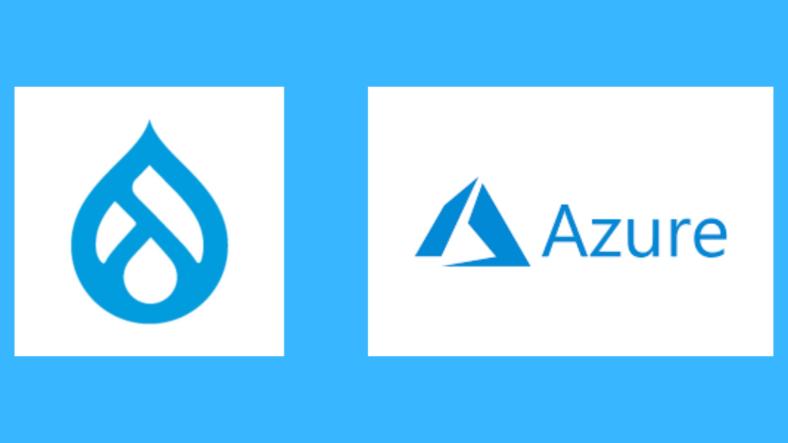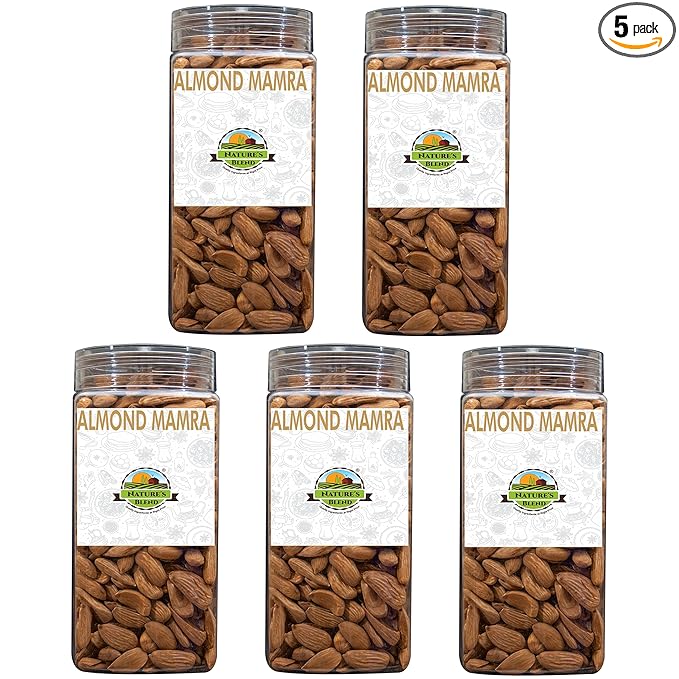Azure Kubernetes Service (AKS), offered by Microsoft Azure, is a fully managed container orchestration service that leverages Kubernetes to manage, deploy, and scale applications in containers. Kubernetes is the go-to platform for automating the deployment, scaling, and management of containerized applications, making it an ideal choice for running complex web applications like Drupal.
Drupal, an open-source content management system (CMS), powers millions of websites worldwide, from small blogs to large, enterprise-level applications. By deploying Drupal on AKS, you gain the benefits of Kubernetes' orchestration capabilities, while also leveraging Azure's cloud-native tools for enhanced security, scalability, and high availability.
This article provides a detailed theoretical overview of the process involved in deploying Drupal on AKS. We’ll cover the key concepts, the steps involved, and the benefits of using AKS for Drupal, without delving into technical implementation steps like command-line operations.
Key Concepts
1. Azure Kubernetes Service (AKS)
Azure Kubernetes Service (AKS) is a managed Kubernetes offering that allows you to quickly deploy and manage Kubernetes clusters in the Azure cloud. AKS abstracts away the complexity of Kubernetes cluster management by handling tasks such as provisioning, upgrading, scaling, and monitoring. It integrates seamlessly with other Azure services, making it a perfect choice for deploying cloud-native applications.
- Kubernetes Control Plane: Azure manages the Kubernetes control plane, which includes the master nodes responsible for the overall cluster management, scheduling, and orchestrating workloads.
- Kubernetes Worker Nodes: These are the virtual machines that actually run the containerized applications. You manage the worker nodes, but Azure provides a managed infrastructure layer.
- Scaling: AKS allows you to scale your application up and down dynamically, based on the demand. You can configure Kubernetes' auto-scaling feature to adjust the number of worker nodes or pods based on usage.
- Load Balancing and High Availability: Kubernetes provides automatic load balancing of traffic across your containers, ensuring high availability for your applications.
2. Drupal
Drupal is a robust open-source content management system (CMS) used by a wide range of websites, from personal blogs to large enterprise sites. Its modular architecture allows users to extend its functionality using themes and modules, which is one of the reasons it’s highly favored by developers. However, to ensure optimal performance, especially at scale, it’s important to deploy Drupal in a way that leverages the strengths of containerization and cloud computing.
- Database Backend: Drupal requires a relational database like MySQL or PostgreSQL to store its content, user data, and configurations.
- PHP-based: Drupal is built using PHP, a server-side scripting language, and needs a compatible web server like Apache or Nginx to serve web pages.
- Customizability and Extensibility: Drupal’s ability to support custom themes and modules makes it a highly flexible platform for a wide range of use cases, from simple content-driven websites to complex applications.
3. Kubernetes
Kubernetes, often referred to as K8s, is an open-source platform designed for managing containerized applications. Kubernetes automates many of the tasks associated with running and maintaining containerized applications, including:
- Automated Scaling: Kubernetes automatically adjusts the number of running containers (pods) based on the current load.
- Self-Healing: Kubernetes ensures that if a pod fails, it will automatically restart or replace it.
- Service Discovery and Load Balancing: Kubernetes provides a built-in service discovery mechanism and load balancing, ensuring that traffic is routed correctly to the available pods.
- Rolling Updates: Kubernetes enables zero-downtime deployments by performing rolling updates, where new versions of the application are deployed gradually, without affecting the overall availability of the service.
4. Containers and Docker
Google Ad 1
Containers are lightweight, portable units that encapsulate an application and all of its dependencies, ensuring consistency across different environments. Docker is the most widely used containerization platform, enabling developers to build and run containers on any system that supports Docker.
- Consistency: Containers allow applications to run consistently across various environments, whether it's a local development machine, a staging environment, or a production server.
- Isolation: Containers run applications in isolated environments, ensuring that dependencies and configurations do not interfere with other applications or services on the same system.
- Efficiency: Containers are resource-efficient because they share the host operating system’s kernel, which makes them lighter and faster than traditional virtual machines.
5. Helm
Helm is a package manager for Kubernetes that simplifies the deployment of applications. With Helm, you can define, install, and upgrade Kubernetes applications using pre-configured, reusable charts. Helm is particularly useful for deploying complex applications like Drupal, as it abstracts away many of the configuration complexities.
- Helm Charts: Helm charts are pre-configured packages that contain all the Kubernetes resources (deployments, services, pods, etc.) required to run an application.
- Simplified Deployment: By using Helm, you can easily deploy Drupal and other dependencies, such as MySQL, without manually configuring each resource in Kubernetes.
- Upgrades and Rollbacks: Helm makes it easy to manage updates to your application, allowing you to upgrade to a newer version of Drupal or roll back to a previous version with minimal effort.
Step-by-Step Overview of Deploying Drupal on AKS
Step 1: Creating an Azure Kubernetes Service Cluster
Creating an AKS cluster is the first step in deploying Drupal on Kubernetes. The AKS cluster will serve as the container orchestration platform for running Drupal and its dependencies.
- Cluster Configuration:
- You can choose the number of nodes, the size of each node, and the region where your cluster will be deployed.
- You can also enable monitoring features like Azure Monitor to keep track of the health and performance of your applications.
- Kubernetes Control Plane:
- Azure manages the Kubernetes control plane, so you do not need to worry about provisioning or managing master nodes.
- This allows you to focus on deploying and managing your application instead.
- Node Pools:
- AKS uses node pools to define the set of virtual machines (VMs) that will run your workloads.
- You can configure node pools to meet the specific needs of your application, such as using larger nodes for compute-intensive workloads.
Step 2: Preparing the Docker Image for Drupal
To run Drupal in Kubernetes, you need to containerize it using Docker. There are two options:
- Using the Official Drupal Docker Image:
- The official Drupal Docker image is maintained by the Drupal community and comes pre-configured with Apache, PHP, and other necessary dependencies.
- You can use this image to deploy Drupal without needing to customize the configuration.
- Creating a Custom Docker Image:
- If you need additional customization, you can create your own Docker image by extending the official Drupal image in a Dockerfile.
- This can include custom PHP extensions, modules, themes, or additional server configurations.
The custom Docker image allows you to tailor the Drupal environment to meet the specific needs of your application, such as adding custom security measures or installing specific modules.
Step 3: Setting Up the Database for Drupal
Google Ad 2
Drupal requires a relational database like MySQL or PostgreSQL to store its content and configuration. You have two main options for setting up the database:
- Using Azure Database Services:
- Azure offers managed database services like Azure Database for MySQL or Azure Database for PostgreSQL, which are highly scalable, secure, and backed up automatically.
- Using a managed service offloads the complexity of database management and ensures high availability.
- Deploying the Database in AKS:
- If you want to manage the database within your Kubernetes cluster, you can deploy MySQL or PostgreSQL using Helm charts.
- These charts handle database configuration, security, and persistence by provisioning persistent volumes for storing data.
Once the database is set up, you will need to configure Drupal to connect to it by providing the database hostname, username, password, and database name during the installation process.
Step 4: Deploying Drupal Using Helm
Helm is an essential tool for deploying Drupal on AKS, as it automates the creation of Kubernetes resources such as pods, deployments, services, and persistent volumes. There are pre-packaged Helm charts for Drupal that you can use to quickly deploy the application.
- Chart Configuration:
- During installation, you can customize various parameters such as the admin username and password, database connection settings, and other configuration options.
- Helm makes it easy to adjust these settings without manually editing Kubernetes YAML files.
- Dependencies:
- Drupal often depends on other services, such as a database and cache layer.
- Helm can manage these dependencies by deploying and configuring them automatically.
- Automated Deployment:
- Once the Helm chart is configured, you can deploy Drupal to the AKS cluster with a single command.
- Helm will create the necessary Kubernetes resources and deploy Drupal in a containerized environment.
Step 5: Exposing Drupal to the Internet
By default, Drupal will only be accessible within the Kubernetes cluster. To make it publicly available, you will need to expose the service to the internet.
- LoadBalancer:
- Kubernetes can automatically provision a LoadBalancer service, which assigns a public IP address to your Drupal application.
- This is the simplest way to expose your application, and it provides automatic traffic routing to the backend containers.
- Ingress:
- Alternatively, you can use an Ingress controller to manage access to your Drupal site.
- Ingress allows you to define rules for routing HTTP(S) traffic to various services, making it possible to host multiple applications on the same domain.
You can also configure SSL certificates for secure HTTPS access and use DNS to map a custom domain to the public IP.
Step 6: Managing Drupal on AKS
Once Drupal is deployed, Kubernetes will manage the lifecycle of the application. Key management tasks include:
Google Ad 3
- Scaling:
- Kubernetes can automatically scale the number of pods running Drupal based on traffic demand.
- You can also configure horizontal pod autoscaling to increase or decrease the number of pods based on CPU or memory usage.
- Rolling Updates:
- Kubernetes supports rolling updates, which means you can update your Drupal application without downtime.
- New versions are deployed gradually, ensuring that your site remains available.
- Monitoring and Logging:
- AKS integrates with Azure Monitor and Azure Log Analytics to provide real-time insights into the health and performance of your Drupal application.
- You can track metrics such as response times, traffic volume, and error rates.
Benefits of Deploying Drupal on AKS
1. Scalability
- One of the primary advantages of using AKS is the ability to scale your Drupal application automatically.
- Kubernetes supports horizontal scaling, allowing you to increase or decrease the number of running pods based on demand.
- This is particularly useful during high traffic periods or for handling unpredictable spikes in website traffic.
2. High Availability
- Kubernetes ensures that your Drupal application remains highly available by automatically recovering from failures.
- If a pod or node fails, Kubernetes will automatically restart or replace it.
- Additionally, Kubernetes provides load balancing to ensure traffic is evenly distributed across all available pods.
3. Automated Rollouts and Rollbacks
- With Kubernetes, you can deploy new versions of Drupal with zero-downtime rolling updates.
- Kubernetes gradually replaces old versions of the application with new ones, ensuring that users continue to have access during the update process.
- If an update causes issues, Kubernetes can roll back to the previous stable version.
4. Integration with Azure Services
- Running Drupal on AKS enables seamless integration with other Azure services, such as Azure Database for MySQL/PostgreSQL, Azure Blob Storage, and Azure Cache for Redis.
- These managed services handle tasks like database backups, scaling, and caching, allowing you to focus on developing and maintaining your Drupal site.
5. Cost Efficiency
- Azure provides a pay-as-you-go model for AKS, meaning you only pay for the virtual machines (VMs) that are running your Kubernetes worker nodes.
- Kubernetes also optimizes resource usage, ensuring that your resources are efficiently utilized.
6. Security and Compliance
- With AKS, you benefit from Azure’s built-in security features, such as role-based access control (RBAC), managed identities, network policies, and integrated security updates.
- You can also use Azure Active Directory (AAD) for secure authentication and access management.
Conclusion
Deploying Drupal on Azure Kubernetes Service (AKS) is an excellent choice for organizations looking for scalability, high availability, and automation in managing their Drupal applications. Kubernetes' container orchestration features, combined with Azure’s powerful cloud services, offer a robust platform for running Drupal at scale while ensuring flexibility, security, and cost efficiency.
By utilizing AKS, you can focus on building and optimizing your Drupal website, while Azure and Kubernetes handle the complexities of infrastructure management, scaling, and availability. Whether you're running a small personal blog or a large enterprise website, deploying Drupal on AKS offers the reliability and scalability needed for modern, cloud-native web applications.
Thanks for reading the article, for more drupal related articles read and subscribe to peoples blog articles.















